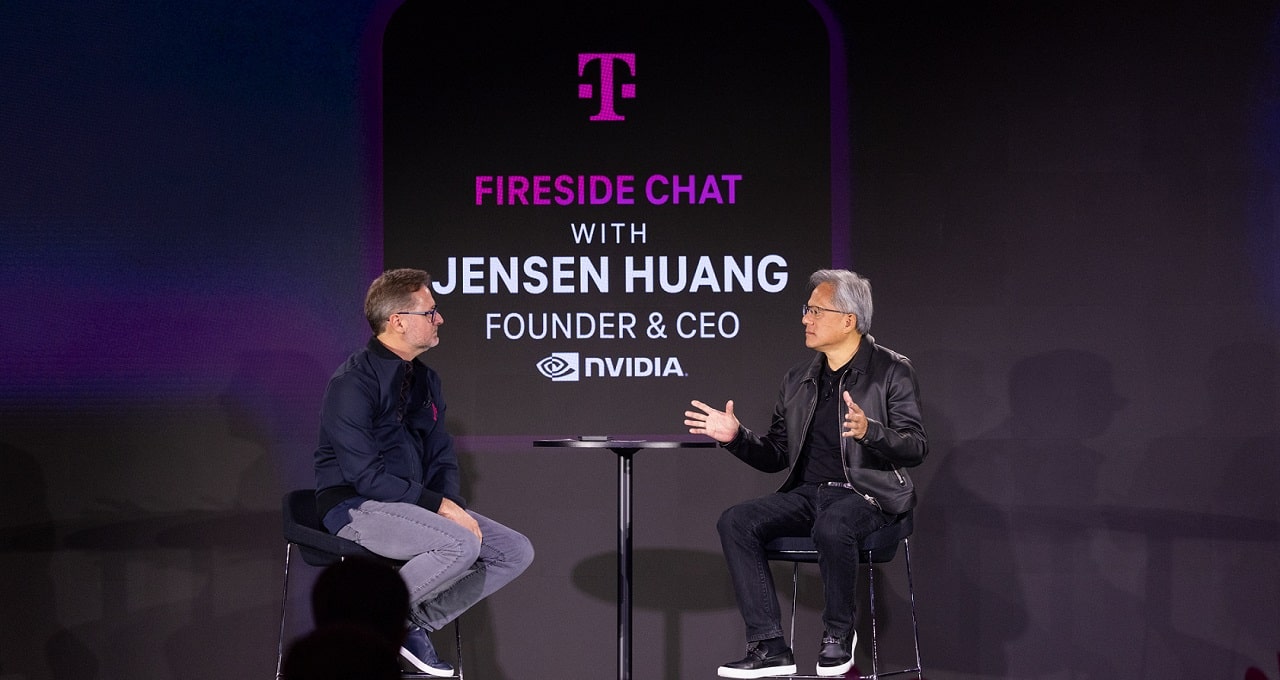
In a shock look at T-Cellular’s Capital Markets Day, NVIDIA founder and CEO Jensen Huang shared a daring imaginative and prescient for the way forward for telecommunications.
“We’ve fused sign processing and AI,” Huang declared throughout a fireplace chat with T-Cellular CEO Mike Sievert, talking to an viewers of press, analysts and buyers. “That is going to be an ideal new progress alternative for the telecommunications business.”
Huang’s remarks got here alongside NVIDIA’s announcement of its groundbreaking AI Aerial platform, which guarantees to reshape wi-fi networks by integrating AI and radio entry networks, AI-RAN.
The platform is designed to optimize community efficiency, effectivity and new income potential, equivalent to AI-computing-as-a-service in periods when community infrastructure is underutilized, maximizing the return on property.
Throughout the dialog, Huang emphasised the significance of AI in shaping the way forward for telecommunications, notably highlighting the function of AI-RAN in optimizing and scaling community efficiency.
Fusing radio computing and AI computing into one structure permits firms to use AI fashions to optimize sign high quality throughout various environments, Huang defined.
He emphasised that this fusion would result in improved community effectivity and new progress alternatives for the telecommunications business,
“We might educate these AI fashions learn how to optimize sign high quality in lots of of 1000’s of digital cities,” Huang mentioned.
AI-RAN aligns with NVIDIA’s broader imaginative and prescient to make AI an integral a part of community infrastructure, enabling telecommunications suppliers to unlock new income streams and ship enhanced experiences via generative AI, robotics and autonomous applied sciences.
Huang underscored the synergies between NVIDIA and T-Cellular, notably their collaboration on the newly introduced AI-RAN Innovation Heart, as co-authors of transformation. The AI-RAN Innovation Heart, developed with T-Cellular, Ericsson and Nokia, is about to speed up the commercialization of AI-RAN applied sciences.
Each radio operates in a novel and continually altering world setting. That is the place deep reinforcement studying algorithms embedded into radio sign processing make advanced computations less complicated with AI to assist ship a customer-centric community expertise.
Sievert emphasised how virtualizing RAN into the cloud will create new enterprise alternatives. He defined that AI workloads will more and more require compute energy positioned near the client, leveraging underutilized community sources.
Huang additionally highlighted the essential function AI will play in making networks extra energy-efficient, emphasizing the necessity for sustainable know-how because the demand for information and connectivity grows.
“We have now to make use of AI to scale back power consumption,” Huang mentioned. “Every thing that we speed up, every little thing that we educate an AI mannequin to do [we] will do much more power effectively.”
As Huang defined, by simulating AI fashions in digital environments with correct physics after which emulating them in the true world, NVIDIA maximizes power effectivity. This method underpins the NVIDIA AI Aerial suite of platforms for designing, coaching and deploying AI-driven mobile networks for AI.
With NVIDIA AI Aerial now supporting a rising ecosystem of companions this collaboration marks a milestone within the telecom business’s journey towards a future powered by AI.